One of the most familiar characteristics of feral and wood pigeons is their iridescent necks.
This shiny, almost mermaid-style visual effect of green and purple is one of the most interesting and beautiful sights in the bird world.
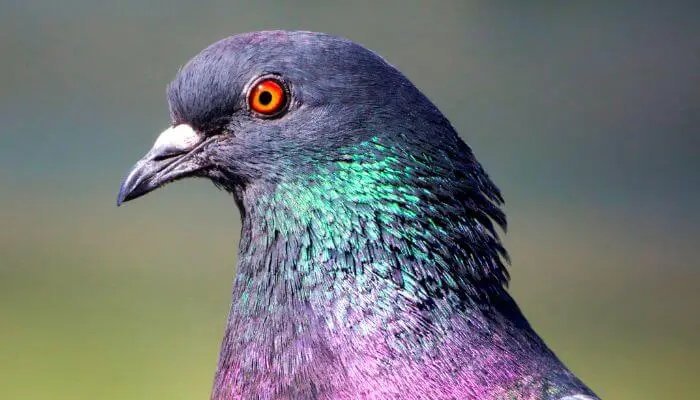
Why Do Pigeons Have Colorful Necks?
Both male and female pigeons have iridescent neck feathers but they are slightly more common and more pronounced in males.
The shimmer is something of an optical illusion, as the purple and green coloring can look different depending on the angle from which you view the bird.
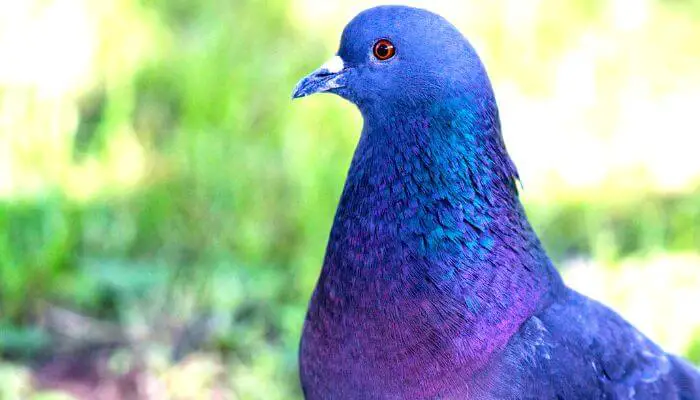
For example, if you watch a pigeon as it turns its neck from side to side, you might notice that the color of the feathers shifts from purple to green and then back again. It’s like a beautiful optical illusion!
There are two ways that the colors of bird feathers are formed: either from pigments in the feather’s cellular structure or the way light refracts from the feather structure. Sometimes, it is both.
Because the stunning iridescent coloring comes from the physical structure of the feathers, the feature is known as ‘structural colors’.
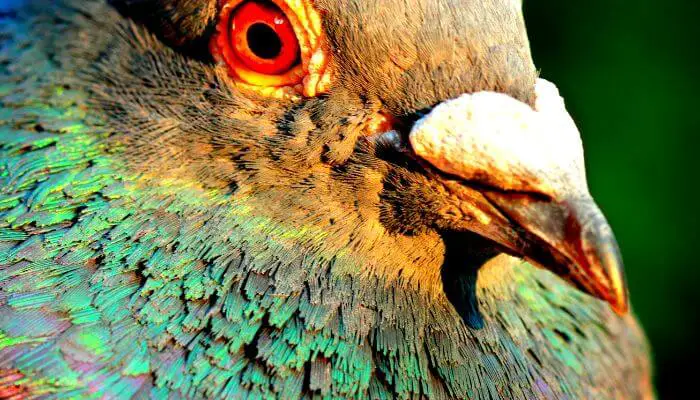
The iridescent feathers on a pigeon’s neck area are made up of a tilted latticework of minute threads of pigmented material.
Light waves reflect off these threads and the colors begin to merge together and hit peaks and troughs in equal measure.
When the light hits troughs, you are unable to see any green or purple coloring on the pigeon, but when the peaks begin to merge, that is when the intense shiny shades become visible.
When light hits the microscopic structure of the feather barbules it refracts, acting like a prism, splitting the light into its various iridescent colors.
The thing is that these two effects work simultaneously which results in the almost constant iridescent glow of the feathers.
To be a bit more scientific, it is refraction. When light hits the microscopic structure of the feather barbules (the fringes on the barbs of feathers), it refracts, acting like a prism, splitting the light into its various iridescent colors.
You might notice that the iridescent feature is much more noticeable in some pigeons compared to others.
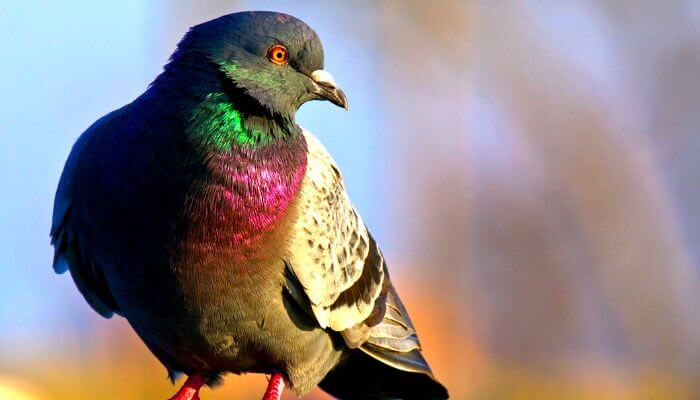
Essentially, the density of the color depends on the complexity of the latticework. For example, the latticework on a pigeon’s neck feathers tends to be much less organized when you compare it to the latticework of other birds.
Compared to something like a bird of paradise, the pigeon’s lattice is a thick, jumbled series of filaments.
Recent research suggests that there is a level of degradation of the iridescent feathers in birds, and in particular in feral pigeons.
The research found that pigeons who carried a higher bacteria load in their bodies displayed a lower level of iridescent feathers around their necks.
To combat the excess bacteria, pigeons will perform a natural maintenance behavior known as preening, but it isn’t always thorough enough to restore the feathers to their desired green and purple hues.
Iridescence in the Natural World
Iridescence isn’t just the domain of feral pigeons.
Within the Columbidae family, the Nicobar pigeon has some of the most stunning iridescent plumage.
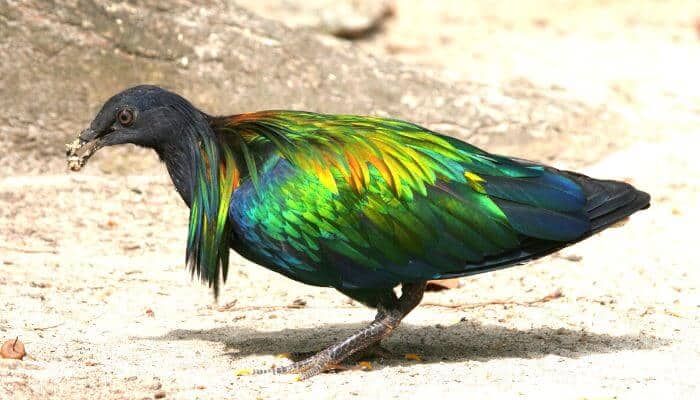
There is also a wide variety of bird species that boast the same eye-catching effect, including hummingbirds, mallards, peacocks and purple martins.
